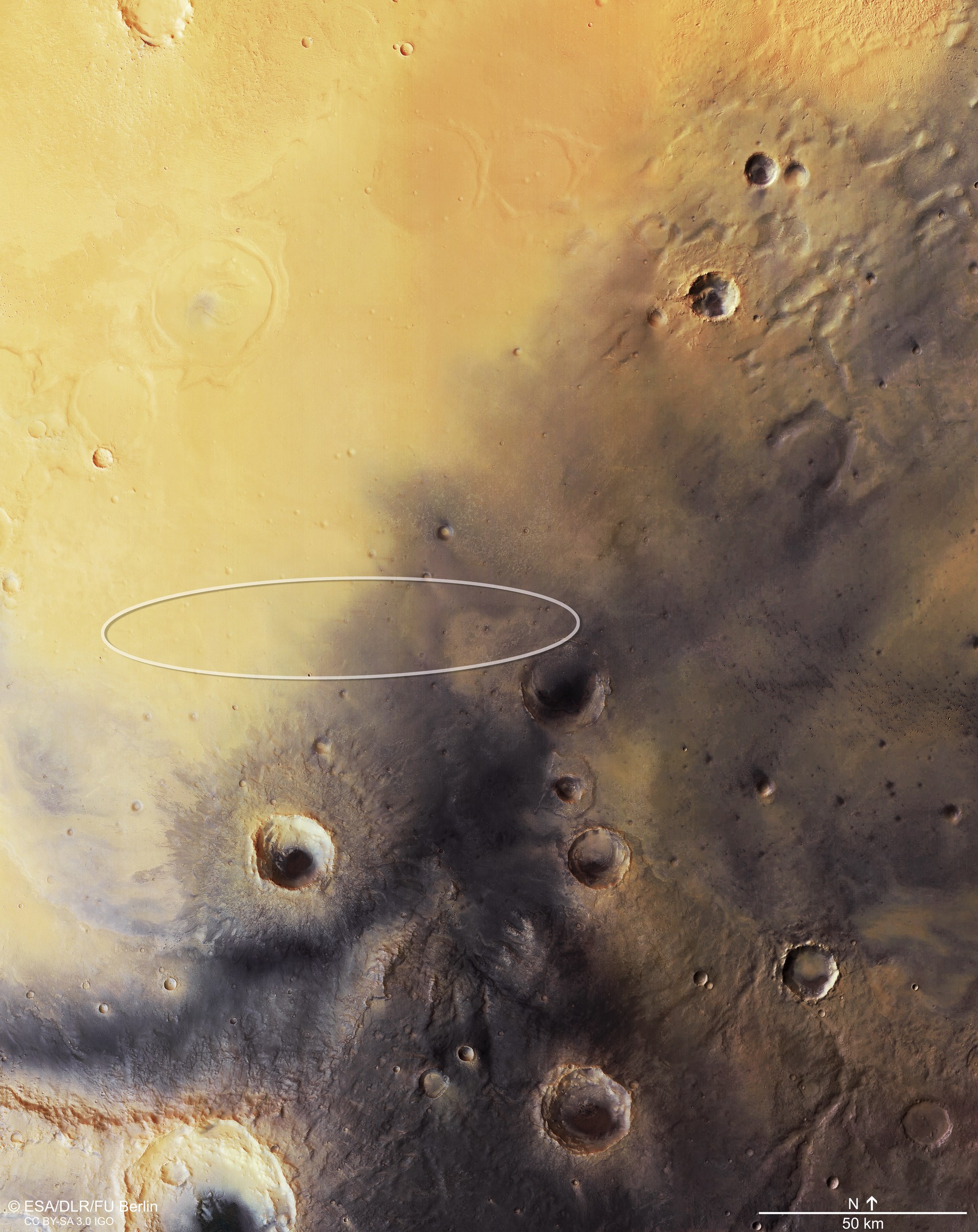The Schiaparelli landing site in an enhanced contrast true colour image. The image was created using four orbit strips from the high-resolution nadir channel and the colour channels of the DLR HRSC stereo camera. By increasing the contrast in the individual colour channels, small material differences in the Martian surface are seen more clearly. So, for example, the dark sands and dusts that were deposited here are more noticeable. Credit: ESA/DLR/FU Berlin - CC BY-SA 3.0 IGO.
The Schiaparelli landing site in an enhanced contrast true colour image. The image was created using four orbit strips from the high-resolution nadir channel and the colour channels of the DLR HRSC stereo camera. By increasing the contrast in the individual colour channels, small material differences in the Martian surface are seen more clearly. So, for example, the dark sands and dusts that were deposited here are more noticeable. Credit: ESA/DLR/FU Berlin - CC BY-SA 3.0 IGO.
The Schiaparelli landing site in an enhanced contrast true colour image.
The Schiaparelli landing site is marked as an ellipse in the picture below. It lies in the Meridiani Planum region at the transition to the southern highlands of Mars and measures 100 kilometres in the east-west direction and 15 kilometres in the north-south direction. The region is relatively flat and even and was selected primarily because of safety issues.
The image was created using four orbit strips from the high-resolution nadir channel and the colour channels of the DLR HRSC stereo camera. By increasing the contrast in the individual colour channels, small material differences in the Martian surface are seen more clearly. So, for example, the dark sands and dusts that were deposited here are more noticeable.

